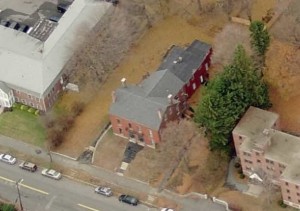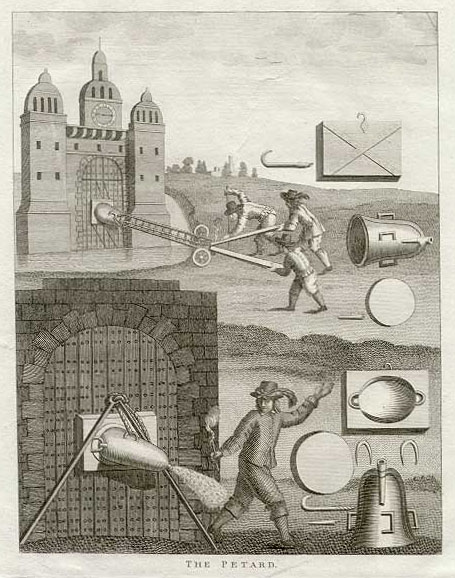 |
The True Story of Ebola in Reston, Virginia |
Image courtesy of Canada Free Press.
In October 1989 people in the community of
Reston, Va., went about their daily lives not realizing that a serious
crisis was developing right in their back yards that would not be
entirely resolved until March 1990. It was a serious calamity that could
have wiped out the entire population. This dire emergency was described
twenty years ago by Richard Preston in his non-fiction book, “The Hot
Zone.” The “hot zone” refers to an “area that contains lethal,
infectious organisms” also dubbed “hot agent,” an “extremely lethal
virus, potentially airborne.” (Richard Preston, The Hot Zone, Random
House, New York, 1994, p. 296)
Hazelton Research Products, a division of
Corning, Inc. was importing and selling lab animals. On Oct. 4, 1989,
the monkey house called Reston Primate Quarantine Unit located not far
from Leesburg Pike, received a shipment of one hundred crab-eating
monkeys (a type of macaque) from the Philippines, caught on the island
of Mindanao. Two of the monkeys were dead in their shipping crates. By
the first of Nov. 29 of the monkeys were dead, most of them in Room F.
The heating and air system had failed so it was assumed the deaths had
occurred from ambient conditions. Each night more macaques died. By Nov.
16, a tentative diagnosis was given “simian hemorrhagic fever.”The
people in the book are real, two victims’ names have been changed, and
the narrative and dialogue were masterfully reconstructed from
interviews and memories of those who participated in the crises.
Thomas Geisbert, an intern at the Institute
discovered under his electron microscope the dreaded Ebola virus. Dr.
Jahrling tested the virus cultures from the macaques against three known
blood serums:
- Musoke (test for Marburg virus)
- Boniface (test for Ebola Sudan)
- Mayinga (test for Ebola Zaire)
The Institute is short for the U.S. Army
Medical Research Institute of Infectious Diseases (USAMRIID) located at
Fort Detrick, Md. Its “mission is medical defense” with specialty in
“drugs, vaccines, and biocontainment.” The Institute’s Army and civilian
personnel were instrumental in the containment of the Ebola Reston
virus in Reston, Va. monkey holding facility. The virus cultures glowed
brightly against the Mayinga blood serum indicating that the monkeys in
the Reston house died of Ebola Zaire strain, the deadliest of all
filoviruses (Ebola).
To contain the spread of Ebola in Reston, the
mutated strain of Ebola Zaire, the Army chose the bio-hazard operation
of killing all the monkeys, bagging them, incinerating their carcasses,
and chemically cleaning and fumigating the building with formaldehyde
gas. Their mission was to safeguard the population, euthanize the
animals humanely (anesthetic, sedative, and a lethal drug), and gather
samples for research from liver and spleen in order to identify the
strain and how it traveled. The entire operation was done in biohazard
Level 4 suits. To a trained eye, the badly liquefied organs and tissues,
the red eyes, frozen faces, and slacking muscles left no doubt that the
monkeys died of Ebola. By Dec. 7, 1989, 450 monkeys were euthanized,
some already very sick and some harboring the virus. (pp. 212-213)
Two monkey handlers got sick, one had a heart
attack and another one was sent to the Fairfax Hospital with flu like
symptoms and vomiting. For unknown reasons, although both had been
exposed to the Ebola virus, neither had contracted Ebola.
After the three-day decontamination, the
building was turned back over from the Army custody to the Hazleton
Research Products who bought more macaques from the Philippines from the
same source in Manila. By the middle January 1990, monkeys in Room C
started to die with bloody noses. It was Ebola again from the
Philippines, not Africa. The monkeys were destroyed and the company
vacated the building.
According to Richard Preston, the disaster in
that ‘building was a kind of experiment.’ “Now they would see what Ebola
could do naturally in a population of monkeys living in a confined air
space, in a kind of city, as it were. The Ebola Reston virus jumped
quickly from room to room… Ebola apparently drifted through the
building’s air-handling ducts.” (pp. 251-252)
Strangely, an animal caretaker, “John Coleus,”
who was doing a necropsy on a dead monkey, cut his thumb with a bloody
scalpel, which is a major exposure to Ebola. Everyone expected him to
die, but he never got sick. The virus entered his blood stream. The
other two animal caretakers, however, did not cut themselves. The virus
entered their bodies through “contact with lungs; everyone at USAMRIID
concluded that Ebola can spread through the air.” (p. 254)
Peter Jahrling, who actually “whiffed the
Ebola and lived to tell about it,” wondered, “Why is the Zaire stuff hot
for humans? Why isn’t the Reston hot for humans, when the strains are
so close to each other? The Ebola Reston virus is almost certainly
transmitted by some airborne route. Those Hazleton workers who had the
virus — I’m pretty sure they got it through the air.” (p. 257)
“Pictures of the lungs of a monkey infected
with Ebola Zaire are fogged with Ebola … You can see Ebola particles
clearly in the air spaces of the lung,” said LTC Nancy Jaax, chief of
pathology at USAMRIID in 1989, a participant in the Reston biohazard
operation. (p. 260)
The four strains of Ebola filoviruses (string
viruses) are: Marburg, Ebola Sudan, Ebola Zaire, and Ebola Reston. They
are named for Ebola River, “a tributary of the Congo, or Zaire, River.”
The most virulent of the viruses, the Zaire strain first appeared in
September 1976 in 55 villages around the Ebola River. The kill rate is
90 percent.
Marburg
Charles Monet, after traveling to Kitum Cave
on Mount Elgon (located between Uganda and Kenya), came down on Jan. 8,
1980, with the Marburg virus and died in a Nairobi hospital on Jan. 15,
attended by Dr. Shem Musoke (the Marburg virus test is named after him).
Dr. Musoke came down with the Marburg virus nine days later. Dr. Musoke
survived with no memory of his ordeal. He became a leading physician at
the Nairobi Hospital with Dr. David Silverstein, who saved his life and
the lives of many others when he persuaded the Kenyan officials to shut
down the Nairobi Hospital in order to prevent further infections. Vials
of Musoke’s infected blood were sent to labs around the world. “The
Marburg in his blood had come from Charles Monet’s black vomit and
perhaps originally from Kitum Cave. (pp. 32-33)
In 1987, a Danish boy called “Peter Cardinal”
went by car on a summer trip with his family who wanted to show him “the
beauty and sweetness of Kenya.” He got sick, turned black-and-blue with
little red spots, red eyes, was unable to breathe, and died of Marburg
in spite of treatment at Nairobi Hospital by Dr. David Silverstein, the
same doctor who saved Dr. Musoke’s life. “Peter Cardinal” had visited
the same cave Charles Monet did, Kitum Cave on Mount Elgon. (pp. 90-96)
Marburg virus kills 25 percent of patients.
Marburg is an African organism but was named after the German town
Marburg because the virus erupted there first in 1967 in Behring Works, a
producer of vaccines from kidney cells of African green monkeys
imported from Uganda. The first reported victim was Klaus F. who fed the
monkeys and washed their cages. He became ill on Aug. 8, 1967, and died
two weeks later. (p. 26)
Prior to the Klaus F. casualty, in the period
of 1962-1965, there were unconfirmed reports of people and monkeys dying
with symptoms of bleeding and a “peculiar skin rash” on the slopes of
Mount Elgon in Eastern Uganda.
Red eyes, fever, uncontrolled vomiting of
black blood, sloughing off intestinal tissues, fulminating liver
failure, brain damage, veins bursting, and liquefaction of tissues are
some of the horrendous symptoms of Ebola.
Richard Preston said that Marburg has an
effect on humans as if they were exposed to radiation‚ connective
tissues, intestines, skin are affected, hair dies at the root,
radiation-like burns cause skin to peel off hands, faces, feet, and
genitals, blown up or semi-rotten testicles. (p. 27)
Ebola virus is composed of seven different
proteins, four of which are completely unknown, their structure and
function are a mystery. Ebola is a distant relative of measles, mumps,
and rabies, the parainfluenza virus, and the syncytial virus. Ebola
attacks the immune system in a similar manner of HIV. (p. 46)
Ebola Zaire
The Mayinga strain of the Ebola Zaire came from a nurse working at a hospital in Zaire who cared for a Roman Catholic nun who died of Ebola. The young woman’s name was Mayinga N. The nun infected Mayinga when she bled all over her. The twenty year old died of Ebola on Oct. 19, 1976. (p. 54)
“No one caught the virus from nurse Mayinga,
even though she had been in close contact with at least thirty-seven
people and shared a bottle of soda pop with someone, and not even that
person became ill.” (p. 89)
How infectious is Ebola Zaire? “Five or ten
Ebola-virus particles suspended in a droplet of blood could easily slip
through a pinhole in a surgical glove, and that might be enough to start
an explosive infection.” (p. 63)
Ebola Zaire kills much of the host while it is
still alive. It turns the inside of the body into “digested slime of
virus particles,” “the collagen in the body turns to mush, and the
underlayers of the skin die and liquefy.” The mouth bleeds, heart bleeds
into itself, brain swells with dead blood cells and strokes, eyes fill
up with blood, other orifices ooze blood, liver swells, turns yellow,
liquefies, and cracks. Epileptic convulsions appear in the final stages.
(pp. 72-75)
Karl Johnson, one of the discoverers of the
Ebola Virus, said to the author, “A virus can be useful to a species by
thinning it out.” (p. 83)
Ebola Zaire, twice as lethal as Ebola Sudan,
was first mentioned in Sept. 1976 in a region of northern Zaire called
Bumba Zone in the vicinity of the Ebola River, but nobody knows who the
first victim was.
A school teacher received an injection from
the Yambuku Hospital with one of the five hypodermic syringes that were
used to give shots to hundreds of people in the outpatient and maternity
clinics. This teacher came down with Ebola Zaire a few days later.
Nobody knows who the person was who received the shot right before the
school teacher. Ebola erupted in 55 villages around the hospital, first
in those who received shots and then in family members, particularly
women who prepare the dead for burial. (p. 71)
Ebola Sudan
The first identified case, that later became Ebola Sudan and “nearly devastated the human population of southern Sudan,” was Mr. Yu. G., a storekeeper in a cotton factory in the town of Nzara. No one knows where he got the infection, the bats roosting in the ceiling of the room above his desk, trapped in cotton fibers, from rats, etc. Two other men who worked with him died as well of Ebola. One individual known as P.G. passed Ebola to his alleged mistresses in town.
The hospital personnel of the Maridi hospital
in Sudan exacerbated the infection by giving injections to many patients
with the same dirty and infected needles.
http://virginiafreecitizen.com/2014/08/05/true-story-ebola-reston-virginia/
Rodriguez defaulted on his loan and in June 2006 the property was sold at a foreclosure sale. The foreclosing lender was U.S. Bank, as Trustee under a mortgage pooling and servicing agreement, and the successful bidder was also U.S. Bank. Weeks later, in July 2006, an assignment of the now-foreclosed mortgage from MERS, as nominee for Finance America, to U.S. Bank, was created (signed and dated). The assignment of mortgage was then recorded in the land records (Southern Essex Registry of Deeds).
Such were the circumstances when, in October 2006, Francis acquired the property by quitclaim deed from U.S. Bank.
 |
| >http://www.landsakes.com/2011/10/foreclosures-haunted-houses/ >MERS HQ~BLDG, Reston, Virginia |
The Land Court ruled against Francis, even though Rodriguez could not be found and there was no opposition to the lawsuit. The court held Francis did not have standing to sue because the U.S. Bank foreclosure was void and his quitclaim deed was worthless. Francis appealed, and the Massachusetts Supreme Judicial Court agreed to decide the case.
WORLD EARTH GLOBALISTS'
GHETTOS-HELLS-ANY-ALL
METZITZAH B'PEH & CIRCUMCISION STOP-ANY-ALL
APARTHEID "SPLIT THE HOOD!" NO-NO-NO
STOP-ANY-ALL GENOCIDAL CRIMINALLY INSANE
INFANTILE HARMED VISIONS-IMAGERY
BE-FAITH-FILLED-NOW-EVOLVED
Jumpin Thru Hoops Shape-Shifting Energy Forces
NINETY (90) PERCENT (%) REALLY!
the number of human beings to be wiped off earth
HINT-CLUE: GEORGIA GUIDESTONES!! 2014!!!
RUSSIAN SEER VANGA!!!!!!!!!!!!!!!!!!!!!!!!!!!!!!!!!TOO
MORTGAGE ELECTRONIC REGISTRATION SYSTEMS
what a way to steal the whole damn REALITY!
MERS invisible monster that kills dreams & ? HOW MANY ?
Along Comes A Spider And Bites A Spirit Elementally
changing the way a body eats, drinks, sleeps and
indeed the body-mind-spirit GET READY!
REALLY!! How does an IMMUNE SYSTEM
recover from all-the-ins-outs-all-about whirlwinds blow
NAZISM-FASCISM-ISM-ISM-ISM$ WHO
are the MONSTERS waging exterminations
paying for acts too vile but, pictures shows for all
eyes to witness just how EVIL human?
DEATH PORN, REALLY!? IMAGINING WHOSE
REALITY/IES! ISMS ISMS ISMS filling the species'
Homo Sapiens' coffins full to the brim!
AND THE UN! UNITED NATIONS? INSURANCE!!!!
WTF, every human has hairs counted alright, UN
insures a payout for the humans' DOA
SICK yes indeed the species has run
the stock right off the proverbial cliff
skewered and hoisted on our own EBOLA~MERS
petard-retards METZITZAH B'PEH / CIRCUMCISED
BIG P HARM Americans
how do we count the numbers of ways-means-ET CETERA
GOOGLE IMAGES TRUE STORIES EBOLA, "SEE" MORE NON-FICTION THAN THE MAINSTREAM FICTITIOUS PROPAGANDA PROGRAMMING
...Wrong again, Watson. But I'm sure that any French speakers among us
already know that. Also, closer readers of Shakespeare than I am,
apparently. My long held imagery blown up in an instant.Not a soldier
tripping on his sword on the battlefield, but rather an
'engineer'falling victim to his own contraption.To be hoist on one's own
petard is to be blown away--quite literally.
A petard is a bomb. Not a high tech bomb, because the word dates back a few centuries. It was the kind of bomb back then that was planted to breach walls and blast through gates. Gunpowder inside a metal container and with a slow fuse usually did the trick. Emphasis on usually.
The word comes from the Middle French peter, "to pass wind". In French, it remains a current word--it's the name for firecracker, and more slangily, either a joint or a pistol. It crossed the Channel in time for Shakespeare to use it in one of his greatest plays, which is why we know it, and why I should have known its true meaning before this (the variant spellings are his, not mine) :
Let it work;
For 'tis the sport to have the enginer
Hoist with his own petar; and 't shall go hard
But I will delve one yard below their mines
And blow them at the moon
For
those who don't already recognize it, that's a princely fellow foiling
the plans of a couple of school chums. That's all I'm saying. >>CONFESSIONofIGNORANCEblogspot>>
A petard is a bomb. Not a high tech bomb, because the word dates back a few centuries. It was the kind of bomb back then that was planted to breach walls and blast through gates. Gunpowder inside a metal container and with a slow fuse usually did the trick. Emphasis on usually.
The word comes from the Middle French peter, "to pass wind". In French, it remains a current word--it's the name for firecracker, and more slangily, either a joint or a pistol. It crossed the Channel in time for Shakespeare to use it in one of his greatest plays, which is why we know it, and why I should have known its true meaning before this (the variant spellings are his, not mine) :
Let it work;
For 'tis the sport to have the enginer
Hoist with his own petar; and 't shall go hard
But I will delve one yard below their mines
And blow them at the moon


Cui Bono FOLLOW the "Money"!
ReplyDeleteFOLLOW the "Money": Cui Bono!!!